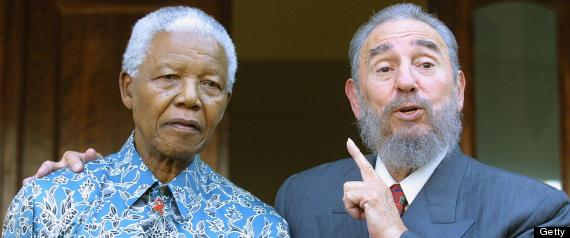Nelson Mandela, South African Icon of Peaceful Resistance, Is Dead

 Play video
Play video
By Jigar Mehta
Kim Ludbrook/European Pressphoto Agency
The Life of Nelson Mandela, 1918-2013: Nelson Mandela, who led the emancipation of South Africa from white minority rule and served as his country’s first black president, died at 95.
By LYDIA POLGREEN
Published: December 5, 2013
JOHANNESBURG — Nelson Mandela, South Africa’s first black president and an enduring icon of the struggle against racial oppression, died on Thursday, the government announced, leaving the nation without its moral center at a time of growing dissatisfaction with the country’s leaders.
Multimedia
 Photographs
Photographs
Mandela as Dissident, Liberator and Statesman

Connect With Us on Twitter
Follow @nytimesworld for international breaking news and headlines.
Twitter List: Reporters and Editors
Mr. Mandela spent 27 years in prison after being convicted of treason by the white minority government, only to forge a peaceful end to white rule by negotiating with his captors after his release in 1990. He led the African National Congress, long a banned liberation movement, to a resounding electoral victory in 1994, the first fully democratic election in the country’s history.
Mr. Mandela served just one term as South Africa’s president and had not been seen in public since 2010, when the nation hosted the soccer World Cup. But his decades in prison and his insistence on forgiveness over vengeance made him a potent symbol of the struggle to end this country’s brutally codified system of racial domination, and of the power of peaceful resolution in even the most intractable conflicts.
Years after he retreated from public life, his name still resonated as an emblem of his effort to transcend decades of racial division and create what South Africans called a Rainbow Nation.

 Play video
Play videoBy Jigar Mehta
Kim Ludbrook/European Pressphoto Agency
The Life of Nelson Mandela, 1918-2013: Nelson Mandela, who led the emancipation of South Africa from white minority rule and served as his country’s first black president, died at 95.
By LYDIA POLGREEN
Published: December 5, 2013
- Google+
- Save
- Share
- Reprints
-

JOHANNESBURG — Nelson Mandela, South Africa’s first black president and an enduring icon of the struggle against racial oppression, died on Thursday, the government announced, leaving the nation without its moral center at a time of growing dissatisfaction with the country’s leaders.
Multimedia
 Photographs
Photographs Mandela as Dissident, Liberator and Statesman
Connect With Us on Twitter
Follow @nytimesworld for international breaking news and headlines.
Twitter List: Reporters and Editors
Mr. Mandela spent 27 years in prison after being convicted of treason by the white minority government, only to forge a peaceful end to white rule by negotiating with his captors after his release in 1990. He led the African National Congress, long a banned liberation movement, to a resounding electoral victory in 1994, the first fully democratic election in the country’s history.
Mr. Mandela served just one term as South Africa’s president and had not been seen in public since 2010, when the nation hosted the soccer World Cup. But his decades in prison and his insistence on forgiveness over vengeance made him a potent symbol of the struggle to end this country’s brutally codified system of racial domination, and of the power of peaceful resolution in even the most intractable conflicts.
Years after he retreated from public life, his name still resonated as an emblem of his effort to transcend decades of racial division and create what South Africans called a Rainbow Nation.



Comment